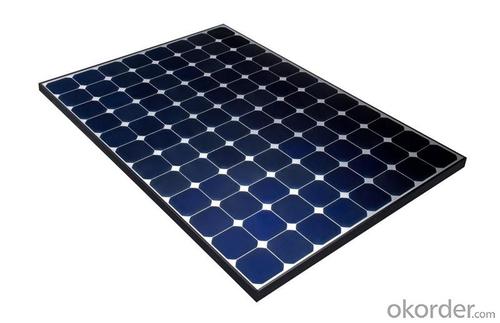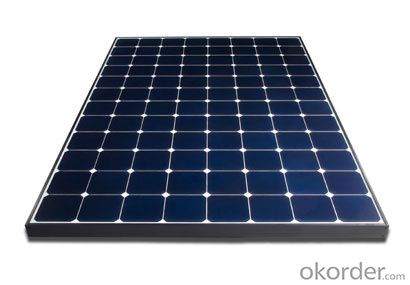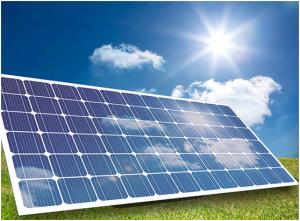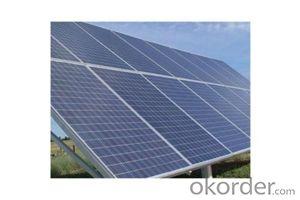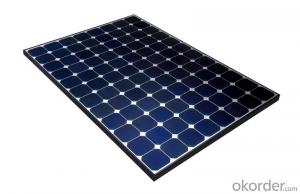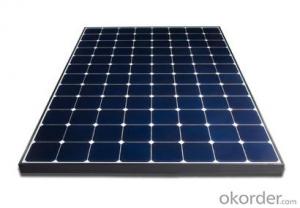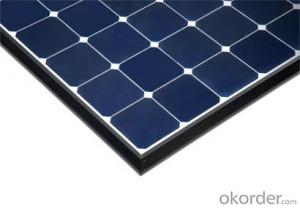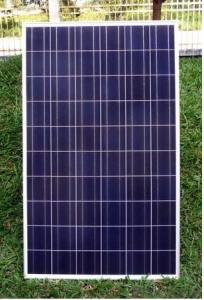Solar Panels of America - Multicrystalline Solar Panel 180W A Grade for Commercial
- Loading Port:
- Qingdao
- Payment Terms:
- TT OR LC
- Min Order Qty:
- 100 watt
- Supply Capability:
- 20000 watt/month
OKorder Service Pledge
OKorder Financial Service
You Might Also Like
Specification
Muticrystalline Solar Panel 180W A Grade For Commercial
Introduction
It is a form of photoelectric cell, defined as a device whose electrical characteristics, such as current, voltage, or resistance, vary when exposed to light. Solar cells are the building blocks of photovoltaic modules, otherwise known as solar panels.
Multiple solar cells in an integrated group, all oriented in one plane, constitute a solar photovoltaic panel or solar photovoltaic module. Photovoltaic modules often have a sheet of glass on the sun-facing side, allowing light to pass while protecting the semiconductor wafers. Solar cells are usually connected in series and parallel circuits or series in modules, creating an additive voltage. Connecting cells in parallel yields a higher current; however, problems such as shadow effects can shut down the weaker (less illuminated) parallel string (a number of series connected cells) causing substantial power loss and possible damage because of the reverse bias applied to the shadowed cells by their illuminated partners. Strings of series cells are usually handled independently and not

Suggested application
Home lighting business lighting,
Garden lighting, pavement lighting
Farmer household lighting
Product feature
modules are made of Monocrystalline or Polycrystalline Silicon cell.
Materials and color of the solar panel frame: Clear anodized aluminum alloy type 6063T5 Universal frame; Silver-white color;
The output connection gathers the coupling: Selects conforms to the IEC-612615; 2005, class II, IEC61730 international standard; Airtight waterproofing binding clamp;
Module seal structure: The surface is thick, the high diaphanous rate armored glass with solar cell board special-purpose 3.2mm becomes after the high temperature lamination craft. The back selects has waterproof and anti- aged performance fine TPT materials. The entire block battery board has, the waterproofing, the anti- aging airtight and so on the fine performance;
Power tolerance: +/-3%
Packaging
International standard cartons(according to the requirements of customers )
- Q: Can solar panels be used in hot climates?
- Yes, solar panels can be used in hot climates. In fact, solar panels often perform better in hot weather as they rely on sunlight, not heat, to generate electricity. However, it's important to consider factors like panel efficiency, temperature coefficients, and proper installation to maximize their effectiveness in hot regions.
- Q: I mean like bread is made of wheat, what are solar panels made up of?How are they manufactured?
- Solar panels (aka photovoltaic panel) are most often made up of thin wafers of crystalline silicon or cadmium telluride. As photons from the sun enter the photovoltaic cell, electrons are freed from the substrate when are then collected by wires that run throughout the panel. And as we know electrons=electricity!
- Q: If you were to shine, for example, heat lamps onto the solar panel along with the sun, will the solar panel eventually not work? Or will they produce more light as long as more light is directed onto them.
- yeah, as you shine light over a solar panel, it begins to lose electrons to the circuit. if you shine light with enough intensity (that means not strong light, the photoelectric effect makes no distinction between a powerful photon and a weak one, as long as they're both over a certain energy, but a lot of it, as in, a lot of photons), the material may not recover electrons at the same rate it loses it, and would stop working, until you gave it a rest.
- Q: What direction do solar panels usually point? North? East? South? West?
- The general answer is toward the equator, so south when the array is north of the Tropic of Cancer, and north when south of the Tropic of Capricorn. In the equatorial zone, one would often still point towards the equator, but other factors such as wanting the panels to efficiently drain rain and dew come into play. But wait, not so fast. Financial considerations dominate in some areas. When afternoon electricity costs more than morning electricity, it may pay to have panels oriented southwest in the northern hemisphere. Where electricity costs the same all day long, it may pay to orient the panels southeast, to harvest more in the morning, when temperatures are cooler, and the panels are more efficient. For solar hot water, SW is usually optimal in the northern hemisphere, because of higher ambient temperatures, and also the usage pattern of most people using the hot water when they get home in the evening. A local installer that has been around for several years will know what orientation is optimal for your area.
- Q: Can solar panels be used to power air conditioning or heating systems?
- Yes, solar panels can be used to power both air conditioning and heating systems. Solar panels generate electricity by converting sunlight into energy, which can then be used to power various appliances and systems, including air conditioners and heating units. This allows for more sustainable and environmentally friendly ways of cooling and heating buildings.
- Q: Can solar panels be used for powering public transportation?
- Yes, solar panels can be used for powering public transportation. Solar energy can be harnessed through solar panels and converted into electricity, which can then be used to power electric buses, trains, trams, and other forms of public transportation. This helps reduce dependence on fossil fuels, lower greenhouse gas emissions, and promote sustainable and clean energy solutions for transportation systems.
- Q: I've run out of things to keep me entertained recently and as part of a larger project, I was curious if its possible to 'McGuyver' up a solar panel out of common materials?
- It okorder /
- Q: I have a solar panel 7.5V .25W 50mah, connect 2 in parallel to power a RC boat. The boat use to run on 6cell battery pack - 7.2V 800Mah.The dc motor requirement based on the provided battery pack, i assume would be 7.2V and rated at (7.2V * .8Amp) = 2.96 Watt.Would two of my solar panels run this DC motor ?are my calculations or understanding correct ?do lend a hand dear ''world''
- Wood? Steel tubing could be a lot lighter. Use the hardest narrowest tires you can find bicycle wheels and tires would work nicely and they can be had with really light disc breaks. As for a motor a golf cart motor is made to order. You can get an old electric golf cart and have almost all the parts you will need. Hell cover the roof of the cart with photo voltaic and have a ball. Note I stress weight savings as weight will cost you energy and with photos you won't have much to spare. You will need a battery pac of some sort lithium are a better choice than lead acid. there is a ton more to consider good luck with your project.
- Q: where can i get some solar panels for a camper trailer
- I think this is what your looking for.. For future reference all I did was type in, Camper Solar Panel in google. If this is what you wanted please select me as the best answer.
- Q: I have this question for extracredit and I dont get it?How many 2V,2W PV panels would be required to supply a load that requires a 48-volt supply that can push at least 2.8 amps of current, if you assume each panel puts out A at 2 V? And how are the panels configured to supply the power requirements of the load?
- 4 in series for the 48V, a rack of 3 sets wired in parallel to give the current. (total of 2 panels)
Send your message to us
Solar Panels of America - Multicrystalline Solar Panel 180W A Grade for Commercial
- Loading Port:
- Qingdao
- Payment Terms:
- TT OR LC
- Min Order Qty:
- 100 watt
- Supply Capability:
- 20000 watt/month
OKorder Service Pledge
OKorder Financial Service
Similar products
Hot products
Hot Searches


